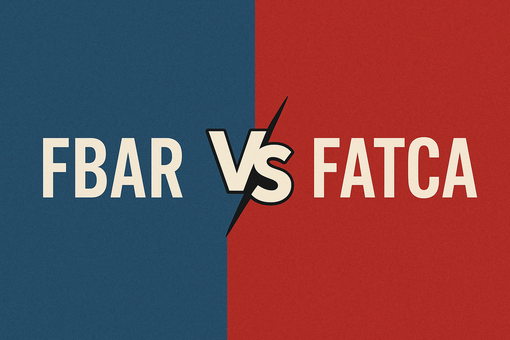Retiring in Panama: A guide for US citizens

Panama has become one of the most appealing retirement destinations for Americans seeking warm weather, affordable living, and a welcoming atmosphere.
With its strategic location connecting North and South America, this tropical paradise offers retirees a unique blend of modern conveniences and natural beauty. As retirement overseas gains popularity, Panama stands out for its generous visa programs and expat-friendly policies that make transitioning to life abroad simpler than in many other countries.
Why retire in Panama?
Panama attracts retirees from around the world for several compelling reasons. The country boasts a warm tropical climate year-round, with temperatures typically ranging from 75F to 90F in coastal areas and cooler "spring-like" temperatures in highland regions like Boquete. This climate diversity allows retirees to choose environments that match their preferences.
Beyond weather, Panama offers established expat communities where newcomers can quickly find friends and support networks. Many Panamanians speak English, especially in urban areas and tourist destinations, making daily interactions easier for those still learning Spanish.
The affordability factor is perhaps most significant - as an American retiring in Panama, you can expect to reduce your living expenses by 30-50% compared to the United States while maintaining or even improving your quality of life.
Cost of living in Panama
The cost of retirement in Panama varies significantly depending on location and lifestyle choices. In Panama City, a cosmopolitan lifestyle will naturally cost more than living in smaller towns or rural areas. However, even in the capital, expenses remain considerably lower than in comparable US cities.
Here's a breakdown of typical monthly expenses for retirees:
Housing
- Rent: $600-1,500 for quality accommodations, depending on location
- Purchase: Starting around $100,000 for apartments, higher in premium areas
- Utilities: $100-200, including electricity, water, and internet
Healthcare
- Doctor's visit: $20-50
- Private insurance: $50-300 monthly, depending on age and coverage
- Prescription medications: 10-20% less than US prices (plus Pensionado discounts)
Food and groceries
- Market shopping: $300-400 monthly
- Restaurant meals: $5-15 for local establishments, $15-30 for international dining
Transportation
- Taxis/Uber: $25 for most city trips
- Public transportation: Mostly under $1 per ride
- Car ownership: Similar to US costs, though fuel is slightly less expensive
A retired couple can live comfortably in most urban areas of Panama for $2,200-4,100 per month, including occasional entertainment and travel. This figure can be lower in rural areas or higher in premium neighborhoods of Panama City or exclusive expat communities.
NOTE! Many retirees report that their Social Security benefits alone are sufficient for a comfortable lifestyle in Panama, especially when taking advantage of the Pensionado program discounts.
The Pensionado Program
The Pensionado program, or Panama retirement visa, is widely considered one of the most generous in the world. To qualify, applicants must:
- be at least 18 years old (though typically intended for retirees)
- demonstrate good health and be free from contagious diseases
- receive a verifiable lifetime pension of at least $1,000 per month
- no criminal record
For married couples, the primary applicant needs a minimum $1,000 monthly income, with an additional $250 required for each dependent. Alternatively, if you purchase property worth at least $100,000, the income requirement drops to $750 monthly.
The application process requires:
- Authenticating documents at a Panamanian consulate before traveling.
- Obtaining a health certificate from a Panamanian doctor.
- Submitting your application through a Panamanian attorney while in Panama.
- Attending an interview and receiving your visa in person.
Pro tip: While you can begin the process on a tourist visa, having documents authenticated before arrival will save significant time.
The program offers substantial benefits when retiring in Panama, including:
- 25% off utility bills
- 25% off airline tickets
- 20% off medical services (10% off medications)
- 25% off entertainment, including movies and sporting events
- 50% off hotel stays on Monday-Thursday (30% on weekends)
- import tax exemption for household goods
The most popular places to retire in Panama
Panama offers diverse lifestyle options for retirees, from bustling urban centers to peaceful beach towns and cool mountain retreats.
Panama City – The capital delivers cosmopolitan living with first-world amenities, including upscale shopping malls, international restaurants, and cultural attractions. Popular neighborhoods for expats include Punta Pacifica, Costa del Este, and the historic Casco Viejo district. While housing costs are highest here, the city offers unmatched convenience and entertainment options.
Boquete – Located in the Chiriquí highlands, Boquete has become a favorite among North American retirees seeking cooler temperatures and lush mountain scenery. The area boasts an established expat community, excellent restaurants, and outdoor activities like hiking and birdwatching. Property values have increased due to popularity, but it remains more affordable than premium US retirement destinations.
Coronado – This beach community, about an hour from Panama City, offers oceanfront living with modern conveniences. The area features gated communities, golf courses, and good healthcare facilities. Many US citizens and Canadians have settled here, creating a welcoming environment for newcomers.
David – As Panama's second-largest city, David offers urban amenities at lower prices than the capital. Located near both beaches and mountains, it serves as a convenient hub for exploring the region while providing essential services and healthcare.
Pedasi – This charming town on the Azuero Peninsula attracts retirees seeking a quieter pace of life near beautiful beaches. The area has seen development but maintains its traditional character and offers a more authentic Panamanian experience.
Taxes, banking & legal residency
One of the most attractive aspects of retiring in Panama is its territorial tax system. Panama only taxes income earned within its borders, meaning that for Americans living in Panama, income from US sources like Social Security, pensions, investments, and rental properties isn't subject to Panamanian taxation.
However, US citizens must continue filing US tax returns regardless of residence. The IRS taxes Americans worldwide, but several provisions can reduce or eliminate double taxation:
- Foreign Earned Income Exclusion (up to $126,500 for 2024)
- Foreign Tax Credits
- Foreign Housing Exclusion
Also read. Tax guide for Americans in Panama
Banking in Panama is straightforward but has become more regulated in recent years. To open an account, you'll typically need:
- passport
- a second form of ID
- proof of income
- bank references
- local address proof
For property purchases, Panama offers full ownership rights to foreigners, except for certain waterfront properties. Many retirees choose to rent initially before deciding on a permanent residence. Rental agreements are similar to those in the US, typically requiring first and last month's rent plus a security deposit.
Healthcare in Panama
Healthcare quality in Panama ranks among the best in Latin America, particularly in private facilities. Many doctors are US-trained and speak English, making medical care accessible for expats.
Panama offers several healthcare options:
-
Public Healthcare: The government-run system is available to permanent residents through the Social Security Fund (CSS). While affordable, it often involves longer wait times and may have fewer amenities than private facilities.
- Private Healthcare: Most expats prefer private hospitals and clinics, which offer standards comparable to the US at much lower costs. Major private hospitals include Hospital Punta Pacífica (affiliated with Johns Hopkins) and Centro Médico Paitilla in Panama City.
Insurance options:
-
Local private insurance: $50-150 monthly, depending on age
- International coverage plans: $200-500 monthly
- Self-pay: Many retirees with savings choose to pay out-of-pocket for routine care due to the low costs
Common medical procedures typically cost 4070% less than in the United States, making even uninsured care affordable. Prescription medications are widely available and cost significantly less than in North America.
What daily life looks like in Panama
Living in Panama offers retirees an appealing blend of familiar comforts and new experiences. Daily life varies significantly depending on location - city dwellers enjoy cosmopolitan amenities while those in smaller towns embrace a more relaxed pace.
Language presents both opportunities and challenges. While English is widely spoken in business and tourist areas, learning basic Spanish significantly enhances your experience. Many expats take language classes or use apps to develop conversational skills.
Social life often centers around expat communities that organize regular events, volunteer opportunities, and cultural exchanges. Local Panamanians are generally welcoming, though deeper friendships develop more easily with some Spanish language skills.
Everyday activities might include:
- morning walks along the beach or mountain trails
- shopping at local markets for fresh produce
- coffee with friends at neighborhood cafés
- participating in community events or expat gatherings
- exploring Panama's diverse landscapes on weekend trips
Transportation options include affordable taxis and rideshares in urban areas, while many retirees in smaller communities purchase vehicles for independence. Panama's central location also makes travel throughout Latin America convenient, with Panama City serving as a major international hub.
Comparing Panama with other retirement destinations
Panama vs. Costa Rica
Costa Rica has long been favored for its natural beauty and stable democracy, but it has become increasingly expensive - which is why it lost the top spot in 2025. Panama offers:
- lower cost of living
- better infrastructure and healthcare
- more developed banking system
- use of the US dollar (eliminating currency exchange concerns)
- more generous retirement benefits
However, Costa Rica maintains advantages in environmental protection and overall safety.
Panama vs. Mexico
Mexico attracts many retirees with its cultural richness and variety of destinations. Compared to Mexico, Panama offers:
- greater political stability
- lower crime rates in most areas
- more reliable infrastructure
- a banking system that’s familiar to North Americans
- use of the US dollar
Mexico counters with lower real estate costs in many areas and richer cultural experiences.
Canadians who want to retire in Panama particularly appreciate the tropical climate and easy access to North America, making the transition smoother than more distant destinations like Southeast Asia or Europe.
Pros and cons of retiring in Panama
Pros:
- substantial cost savings compared to the US and Canada
- excellent retirement visa program with generous benefits
- high-quality, affordable healthcare
- use of the US dollar eliminates currency exchange concerns
- proximity to the US for visits home (2.5-hour flight from Miami)
- stable democratic government and economy
- diverse geographic options from beaches to mountains
- established expat communities for support
Cons:
- bureaucracy can be frustrating and time-consuming
- Spanish language skills are necessary outside expat areas
- a tropical climate may be too hot and humid for some
- the rainy season (May-November) brings heavy daily downpours
- driving conditions and traffic can be challenging, especially in Panama City
- service culture differs from North American expectations
- one of the dangers of retiring in Panama is petty theft in urban areas
While Panama ranks among Central America's safest countries, awareness of its surroundings remains important, particularly in certain urban neighborhoods. Most expats report feeling very secure in their communities.
Get personalized tax advice before you retire in Panama
Planning your retirement in Panama? Don't navigate the complex world of international taxation alone. Our experienced tax specialists can help ensure you meet all tax compliance requirements both in Panama and the US.
From managing Social Security benefits to handling investment income, our team provides customized strategies to optimize your tax situation and avoid costly mistakes.
Retiring to Panama? Your tax plan should go with you
Book free consultationFAQ
Yes, many retirees live comfortably on Social Security alone. US Social Security payment averages $1,980 monthly - most recipients exceed the $1,000 minimum required for the Pensionado visa and can maintain a comfortable lifestyle, especially outside Panama City.
Panama ranks as the second-safest country in Central America. While petty crime occurs in urban areas, violent crime against expats is rare. Most retiree destinations have active neighborhood watches and good security.
Yes, pets can be brought to Panama with proper documentation, including vaccination records and health certificates. The process is straightforward but requires planning several months ahead.
Purchasing property in Panama is relatively simple, as foreigners enjoy the same ownership rights as locals (with limited exceptions for certain coastal properties). Despite fewer complications than in many Latin American countries, working with a reputable attorney is advisable.
This guide is for info purposes, not legal advice. Always consult a tax pro for your specific case.



